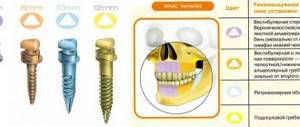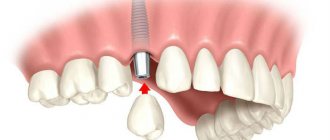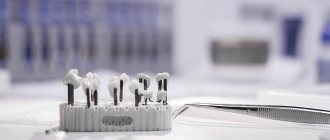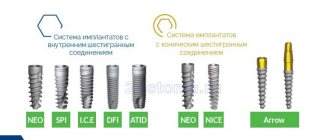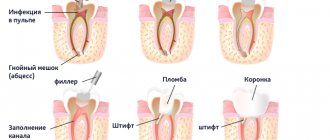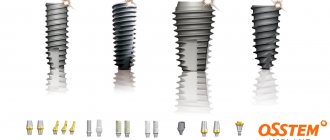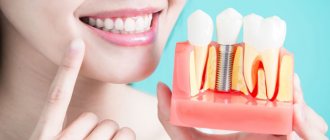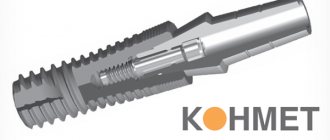This section of somatology is associated with changes in the quality and volume of gums. A specific approach is needed here, since the soft tissues of the oral cavity and mucous membrane have their own characteristics. Soft tissue plastic is included in surgical dentistry. Today, there are about 100 methods of performing soft tissue plastic surgery. Let's talk about this in more detail.
The most common task of this branch of dentistry is to change the volume and characteristics of the gums after tooth loss. If more than a year has passed since the removal or loss, the jaw bone tissue atrophies and decreases in volume. Gums also change their characteristics. As a result, implant installation becomes impossible. The density and elasticity of atrophied soft tissues also does not allow the dental system to fully function. Soft tissue plastic
designed to solve this problem.
To restore the functionality of soft tissues, transplantation is performed. The dentist takes material from the patient from a healthy area of the oral cavity and places it in place of the problematic area. The soft tissues of the oral cavity have excellent regeneration rates, and therefore the rehabilitation period lasts no more than a week. At this time, it is important to follow the doctor’s recommendations to avoid further tissue damage. The probability of engraftment is close to 100%.
When is soft tissue plastic surgery necessary?
- Deficiency of soft tissue volume, as a result:
- long-term absence of a tooth (with edentia, atrophy occurs both in bone tissue and soft tissues);
- wearing a Maryland prosthesis (mechanical impact on soft tissues, even in a short period of time, leads to a loss of gum volume);
- thin biotype of the mucosa (here we are talking about the prognosis of future restoration and prevention of volume deficit of hard and soft tissues).
- Lack of attached keratinized mucosa due to:
- the need for directed bone regeneration or an already performed GBR operation (the suturing technique afterward is such that part of the keratinized mucosa is often lost, not counting the already existing atrophy);
- past mistakes during implantation or soft tissue plastic surgery.
- In order to improve the prognosis of treatment. Creating a reserve of soft tissue in the frontal region increases the favorable prognosis of treatment.
To achieve success, it is necessary to comply with parameters that must be taken into account at the planning stage. Some factors may influence directly, others indirectly. Factors such as the accuracy of sampling the SDT or SST, the processing method, the quality of the graft, the preparation of the material fixation zone and the quality adaptation to the receiving bed directly influence.
Indirect ones include careful planning and compliance with the surgical protocol (position, inclination and size of implants, correct choice of suprastructures, compliance with the necessary timing and stages of treatment).
Before we go any further, let's refresh our memory a little. The purpose of dental implantation is to restore a functionally and aesthetically missing element of the dental system. In the dental system, we are interested in bone tissue, mucous membranes, and adjacent teeth. The function of bone tissue is support, retention of the implant, perception and distribution of load. The function of the mucosa is to protect and nourish bone tissue and ensure adequate hygiene.
Based on the above, it turns out that for high-quality implant treatment it is necessary to have high-quality bone tissue in the right volume and the right place (if there is not enough, create it), and high-quality soft tissue (not only in volume, but also of the desired histological structure). Below are examples in different clinical situations.
How is implantation performed during bone grafting?
Implantation during bone grafting can be carried out either simultaneously with bone grafting, or delayed - when the implants are installed in the new “grown” bone.
As an experienced implant surgeon, in my practice, in 80-90 percent of cases I perform bone grafting at the same time
with implantation.
I will explain why I perform plastic surgery with implantation at the same time, and what is the advantage of this approach. Bone grafting itself requires a long healing period, from 4 to 9 months. And if we maintain this period and then do implantation, then we have to wait another 4 months. That is, the time frame in this case increases significantly.
And if I do implantation along with bone grafting, then the implant takes root along with the bone. A good implant has an excellent osteogenerating surface, and when fused, an excellent result
.
This reduces the patient’s rehabilitation time. And most importantly, the patient DOES NOT NEED
second surgery. We understand that a large number of surgical interventions do not improve trophism, mucous membranes, or bone tissue.
Everything we do at the German Implant Center, from tooth extraction to implantation, is carried out as atraumatically as possible for the patient.
How many implants are placed during a total restoration?
We specialize very broadly in total implant rehabilitation. In the upper jaw, 6-8 implants are recommended according to our protocol; in the lower jaw, 6 implants are sufficient for total rehabilitation.
Often, implantation occurs simultaneously with the installation of temporary teeth, that is, the patient leaves the clinic “with teeth”, and not on the second or third day, but on the same day when implantation is done:
Preliminary implantation planning is carried out using CBCT, the implants are placed in the required positions.
After this, a surgical template is made, according to which the implants are installed. And based on the same computed tomography (CBCT) and images, a temporary structure is made that will be attached to the implants installed for the patient.
And it turns out the so-called “full case” is when the patient comes, if necessary, if circumstances require it, teeth are removed (or they have already been removed/lost earlier), implants are placed on the patient and an orthopedic structure is fixed - his new teeth.
Clinical case No. 1
Simple implantation for long-term missing teeth. An implant is installed, GTR (guided tissue regeneration) is carried out using a SST (connective tissue graft), and a FDM (gingival cuff former) is installed. After 3-4 months you can begin prosthetics.
Rice. 1.
Fig.2.
Varieties
Many types of endoprostheses are used in plastic surgery. This variety allows you to choose the best option for any occasion and get excellent results.
The main classification parameter is the implant material. The survival rate and installation method depend on it.
What breast implants can be placed:
- Hydrogel (bio) – filled with carboxymethylcellulose, a natural polymer that is fully compatible with natural fabrics. When the shell ruptures, the material simply breaks down into glucose, carbon dioxide and water, and is eliminated from the body naturally. A completely safe filler, holds its shape perfectly and does not provoke inflammatory processes, looks natural and attractive.
- Silicone is a classic in endoprosthetics, consisting of an outer shell and an internal filler based on silicone gel. The best products are those with soft touch filler - this is a dense gel that optimally imitates the natural appearance and structure, and restores its shape when compressed. Silicone endoprostheses with standard cohesive gel are also popular for breast enlargement - their advantage is that if the shell is damaged, the jelly-like gel is completely absorbed and does not provoke complications. And another type of silicone is highly responsive - it is very dense, holds its shape excellently, and does not leak, but models based on it give the breasts an unnatural appearance and are too hard to the touch.
- Saline - pioneers of plastic surgery, the very first endoprostheses. Structurally, they consist of a silicone shell and saline filling. First, the shell is placed, and then it is filled with sodium chloride solution. Although it is also possible to install an already filled implant. Such models can be placed with minimal tissue incision, which reduces the trauma of the operation and improves the aesthetic effect due to the absence of scars. The solution itself is absolutely safe for the body. However, if the membrane ruptures, it will be necessary to undergo repeated breast surgery.
- Silica gel - filled with microscopic silicate balls. A distinctive feature is low weight. Silica gel products are very light, therefore they are suitable for large-sized prostheses; they do not weigh down the chest, do not overload the spine and prevent the development of ptosis.
Preference should be given to silicone models. They combine naturalness, elasticity, complete biocompatibility, safety, a wide selection of shapes and sizes, and, in addition, a reasonable price. Whereas bio implants are expensive, and silicate prostheses have not yet become widespread and cannot offer a wide range.
The surface of the implant can be smooth or porous. The latter is preferable, since it does not cause lumps in the breast and other complications, and does not provoke deformation of the endoprosthesis itself. In addition, a textured surface, as is the case with Motiva implants, provides a more secure fit and ensures that the implant does not move or tip over when moving.
How to enlarge breasts: with round and teardrop-shaped implants?
With all the variety of modern implants, they have only two shapes: round and teardrop-shaped, also ergonomic or anatomical.
Round
A universal option for augmentation, correction and mastopexy. Implants are widely used for asymmetry and mastoptosis. They perfectly imitate the natural shape, are easy to install and are affordable.
*Photos before and 2 years after hybrid breast augmentation (enlargement + lipofilling) with Motiva 265 ml round implants
teardrop-shaped
Such implants are noticeably more expensive, but this can be compensated by their advantages. They favorably follow the natural contours and shape of the mammary glands. Ideal for enlarging very small breasts. They are distinguished by high density and hold their shape well. Requires a more complex installation operation.
After inserting anatomical implants, it is advisable to abandon push-up bras and shapewear, as they can deform the prostheses.
Clinical case No. 2
Plastic surgery using SST in 2 stages (after implantation, and during installation of FDM), to compensate for a greater soft tissue deficit than in case No. 1.
Rice. 3.
Rice. 4.
Rice. 5.
Rice. 6.
Causes of bone deficiency:
1) The main reason for the decrease in bone tissue volume is the natural atrophy (resorption) of bone, which occurs in the area of extracted teeth. This happens because the bone loses support in view of the tooth root, and also because in the absence of the tooth root, chewing pressure ceases to be exerted on the bone tissue. As a consequence, there is a decrease in bone volume, which can occur both in height and in width of the alveolar process of the jaw.
2) The second reason is the traumatic removal of decayed teeth by dental surgeons. Usually, during removal, the surgeon does not think at all about the safety of the bone walls of the alveoli around the tooth, biting them off with forceps. If you are planning extraction followed by tooth implantation, then it is best to carry out such removal by an implant surgeon, who will try to preserve the bone tissue as much as possible.
There are 3 types of bone resorption –
- horizontal resorption (Fig. 2), when the width of the alveolar process decreases,
- vertical resorption (Fig. 3), i.e. when there is a decrease in the height of the alveolar process,
- + combined form.
According to the type of resorption in a particular patient, a bone grafting technique is selected, aimed at increasing the width and/or height of the alveolar process of the jaw.
Clinical case No. 4
The same protocol for directed bone regeneration in a separate stage. The creation of the PCD zone and subsequently NTR using SST is carried out after implantation.
Rice. 7.
Rice. 8.
Rice. 9.
The conditions for achieving success are:
- Qualitative translation of SDT into SST. Careful removal of the epithelium, since the presence of pieces of epithelium on the SCT will, at best, complicate the healing process.
- Achieving immobility of the graft in the recipient area, which makes it possible to receive adequate nutrition.
- Correct position of the implants. The proximity of implants to each other may not allow the creation of the required volume of soft tissue. The buccal inclination of the implant and/or the buccal position worsens the aesthetic prognosis of the future restoration, also from the soft tissue side.
What does implantation consist of?
Consultation and diagnosis. Before starting implantation, it is important for the doctor to understand the essence of the problem, the condition of the teeth and bone tissue. Please note that a high-quality dental consultation cannot last 15-20 minutes, while a detailed consultation cannot last less than 1 hour. During this time, the doctor will identify the reasons for the missing tooth, collect information about the patient’s health, lifestyle - this is also important, since it directly affects the “service life” of the implant, conduct diagnostics using a computed tomograph and offer several options for solving the problem. Afterwards, a comprehensive treatment plan is drawn up, which reflects all stages and the full cost.
Analyzes. The overall health of the patient plays a big role. For example, in severe cases of diabetes, implantation is not possible. Therefore, analyzes are another mandatory step.
Sanitation, treatment of diseased teeth. In a good clinic, they will not perform manipulation on you if you have inflammation, caries and other diseases and will first send you for treatment. Professional teeth cleaning will also be mandatory.
Implantation is a surgical stage . Only when all of the above steps have been completed can you begin to install the implant. But even here everything is gradual.
“During the diagnosis, the doctor will determine whether bone tissue augmentation is required. When a tooth is missing, the bone does not receive stress and gradually becomes thinner. In order to place an implant, bone volume may need to be increased. In this case, the cost of implantation will be higher,” they say.
Complications when working with soft tissues
When taking SST or SDT:
- loss of material (the assistant may accidentally aspirate the graft, which entails an increase in the donor zone, or there is a need for another zone);
- taking the wrong volume of material (if there is not enough, it will be necessary to add it in a separate fragment, which complicates the process of fixing the grafts and increases the duration of the operation);
- bleeding in the immediate or delayed time after taking the graft from the palate (increased healing time, discomfort for the patient).
Particular attention should be paid to the technique of collecting SDT and SST, and the technique of suturing on the palate, to ensure comfortable healing and the absence of significant discomfort for the patient during the period of regeneration of the donor area.
Rice. 10.
In preparation:
- insufficient cleansing of epithelium;
- perforation or injury to the flap;
- drying of the graft (humidity throughout the operation ensures the viability of the graft).
When fixing:
- too much suture material (impairs blood supply and injures the graft, complicates vascularization);
- poor adaptation (healing = immobility, this is an important rule that largely determines success).
Guarantee of high-quality implantation
By giving such an amount, the patient hopes for a quality result. To get a strong implant that will last for many years, evaluate how carefully the clinic prepares for manipulation. If at least one of the steps mentioned above is not included in your treatment, this is a reason to think about it. There are cases when implants do not take root at all. In the entire world practice there are only 3% of them, but they still exist. According to experts, a good result during implantation depends on both the patient and the doctor.
“You need to take care of the implant even more than you take care of your teeth. If the patient does not pay due attention, he can quickly lose a new tooth. And if all the rules of oral hygiene are followed, regular checks are carried out by the dentist, and professional teeth cleaning is carried out every six months, then the implant can last a very long time. The patient is also obliged to follow the recommendations issued immediately after installation - take absolutely all prescribed medications, do not drink strong alcohol, avoid the sauna, swimming pool, and so on,” says Artur Avetisyan.
Pay attention to the implants the clinic works with. Choose systems that have been on the market for at least 10-15 years. Such companies invest in research, constantly improve implantation systems, and guarantee high quality. These are European companies Straumann (Switzerland), Nobel (Germany). According to Arthur Avetisyan, if we draw an analogy with the car market, then the products of these companies can be compared with Mercedes.
Alternative solutions
The only alternative to a metal-plastic prosthesis at the first stage of prosthetics after installation of implants can only be a ceramic-composite prosthesis. In general, the final cost of basal implantation using both types of structures is identical. Those. when undergoing re-prosthetics, the patient will have to pay an additional 150 thousand rubles (depending on the material) for the manufacture of a permanent prosthesis. Therefore, the only difference is the necessity or absence of the second stage of prosthetics, as well as the amount that will have to be paid immediately at the time of concluding a contract for dental implantation.
Indications and contraindications for dental implantation
Dental implantation can be used in cases where one, several or all teeth are missing. Many are afraid of this technique, considering it risky. The list of contraindications is not as long as it might seem.
Absolute contraindications:
- age (the jawbone is fully formed only by 17–22 years);
- blood clotting problems;
- oncological diseases;
- osteoporosis;
- recovery after myocardial infarction;
- cardiovascular diseases in the acute stage;
- diabetes mellitus in the stage of decompensation;
- connective tissue diseases;
- alcoholism;
- diseases of the skeletal system;
- disorders of the nervous system;
- chronic liver and kidney failure;
Relative contraindications:
- bearing and feeding a child;
- active smoking;
- abnormal bite (requires adjustment);
- acute periodontitis (requires treatment);
- tartar (requires removal);
- diabetes mellitus in the compensation stage;
- bruxism.
Pregnancy and breastfeeding are relative contraindications to dental implantation for women. But doctors still recommend postponing the procedure. Women expecting a child are generally not recommended to undergo surgical interventions without special indications, especially in the first trimester, when the formation of the baby’s vital organs occurs. Implantation is performed using local anesthesia, after the operation painkillers and anti-inflammatory drugs are prescribed, and X-rays are taken before implantation. All this is extremely undesirable for pregnant women. During pregnancy, immunity is reduced, and recovery after implantation may be delayed. Breastfeeding is another reason to postpone implantation: medications are prohibited, and stress may cause milk to disappear.
Operational path
If, due to age-related changes, the neck has begun to look unattractive, what can aesthetic medicine offer us?
“First, cosmetologists work with this,” explains Svetlana Surovykh. - Using all possible methods, they try to improve the quality of the skin on the neck for some time. Of course, this is not so simple, because the neck is the area of maximum stress and quickly “wears out”. Again, many people take care of their facial skin, but, unfortunately, they forget about the neck and décolleté area. Plastic surgery can offer a neck lift that repositions and eliminates excess skin. In addition, we must take into account that the quality of the platysma, the subcutaneous muscle of the neck, changes with age. Strands (long vertical wrinkles) appear, which become very noticeable when making facial expressions and turning the head. Plus, the angle between the chin and neck becomes more obtuse. Therefore, plastic surgeons work with platysma, altering it, improving its condition and removing excess skin.
If there are also excess fat deposits in this area, then, as a rule, they are first eliminated using liposuction, and then, if necessary, work on the skin. If, in addition to a double chin, the quality of the skin is poor, then liposuction alone will not be enough - the fat will go away, but excess skin will remain and sag. Therefore, they are moved and fixed. It's called neck plastic surgery."
Neck surgery is performed under general anesthesia. The incision is made in front of the ear, going around its lobe, behind the ear, then going into the scalp. Externally, the incisions will not be visible, since in this area, usually, all people have a fold, and the scars are very thin and they are not noticeable.
How did dental implants come about?
Actors who win an Oscar usually thank God and their parents. People who, with the help of implantation, regain their teeth and a comfortable lifestyle, should remember the Swedish professor Per-Ingvar Brånemark with a kind word. Quite by accident, he revolutionized dentistry.
In 1965, Branemark conducted research with a group of scientists. The professor implanted a titanium capsule into the rabbit and was very surprised when he could not remove it. So a happy accident helped to establish that titanium fuses with bone. Branemark decided to use the discovery in dental prosthetics.
The first lucky person with titanium implants is Gust Larsson. A simple carpenter, like Professor Branemark, went down in the history of implantology. Larsson, 34, had a completely toothless mouth. Not life, but torment: eating, talking, smiling - everything is difficult. The man himself found Branemark, having accidentally learned about his experiments. There was nothing left to risk, and Larsson became the first person in the world to receive implants. The patient lived with them for more than 40 years, until his death, proving the effectiveness and reliability of the new method.
The first experiment was successful, but the patient Brånemark was in no hurry to declare a revolution in dentistry. The scientist spoke publicly about his discovery 20 years later. The message caused a sensation! An accidental discovery turned the world of prosthetics upside down and returned a comfortable lifestyle to toothless patients.
Stages of dental implantation
- Before implantation. Dental implantation, like any other operation, requires careful preparation. The result depends on this. The doctor must plan the implantation procedure as accurately as possible and identify all possible contraindications. At the first appointment, the implantologist asks general questions about your health. Referrals for tests and consultations with other specialists are provided if necessary. The oral cavity must be healthy - without caries and inflammation of soft tissues. A few days before surgery, you need to make an appointment for a cleaning.
- Anesthesia.
As a rule, local anesthesia is used for implantation. Modern drugs completely relieve the patient of pain and discomfort. If necessary, sedation or anesthesia is used.
- Implant installation.
If the dental implantation process proceeds without surprises, according to a pre-drawn plan, the operation will take 20 – 40 minutes. First, the doctor will install the implant, then check the degree of primary stabilization, and then decide whether to load it with a crown or not.
- Fixation of the crown.
A temporary crown is fixed if the dental implant is firmly anchored in the bone. In case of problems with the primary stabilization of the implant, only a gum former will be installed. A permanent crown can be placed after the artificial root has completely engrafted, after 3 to 5 months. An abutment will be fixed to the implant, and a permanent crown will be placed on it.
How much load can a short implant withstand?
The question arises: will such a short implant withstand the load? You can install anything, but will such an implant be durable? In order to answer this question, it is necessary to understand what determines the reliability of the implant.
In reality, the length and diameter of the implant do not matter much. The key factor is the area of contact between the implant and the bone tissue. That is, the larger the surface area of the implant that comes into contact with the bone, the greater the load the entire system can withstand.
Therefore, implantologists strive to place an implant of the largest possible diameter and length in order to increase the area of contact between the implant and the bone. But the wider the implant, the larger the hole must be drilled into the bone for it to fit—which means more trauma and less bone left around the implant. If you take a narrow but long implant, you cannot do without vertical plastic surgery. So what should we do?
In 2003, a unique implant was developed that allows one to increase the area of the implant without increasing the diameter of the implant. Thanks to its special design, the Eniridge implant has an area 2-3 times larger than conventional implants.

